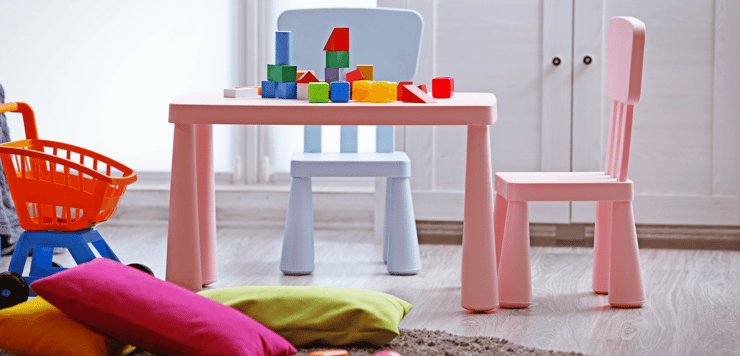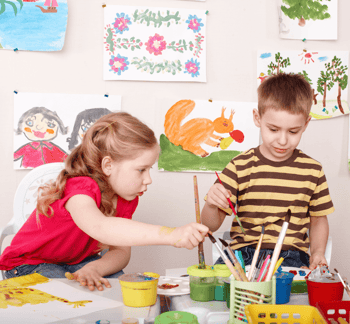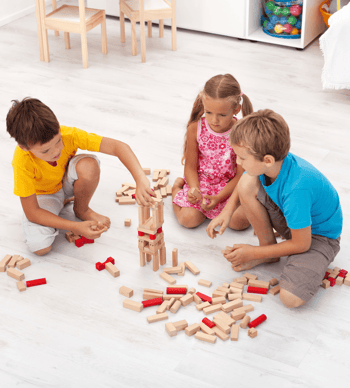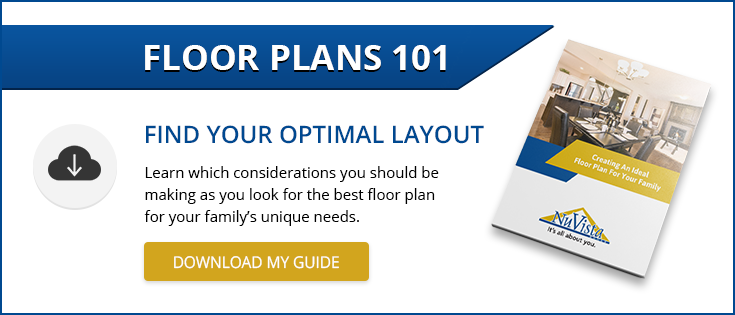 Many of the latest floor plans for new homes include a flex room that you can use in any way to meet your needs. Some may use this room as a home office or gym, but most people with children choose to turn this into a play space.
Many of the latest floor plans for new homes include a flex room that you can use in any way to meet your needs. Some may use this room as a home office or gym, but most people with children choose to turn this into a play space.
While there are many ways to make your home kid-friendly, a separate playroom is a nice addition because it helps keep some of the kid clutter contained. A good design plan can help you make the best use of the space. Use the ideas below to help you get started.
Make It Durable
Kids can wreak havoc on any room, so it’s smart to talk to the builder about ways to make the playroom durable. For instance, hardwood floors might get scratched by toy trains and carpet could be stained by paint spills. Laminate flooring might be a better choice.
For the walls, look for paint types that are easy to wash and that might hide tiny fingerprints. Nothing says “blank canvas” like a big white wall, so adding some colour to the walls may minimize the chances that your little artist will decide the walls need a bit more art.
Create Different Play Zones
Creating an organized playroom is easier than you think. Take inspiration from a preschool classroom by setting up different zones in the room for different types of play.
The play areas in your room will vary depending on your children’s interests, but here are some possible ideas:
- dress up area
- book nook
- arts and crafts space
- LEGO or block building area
- play kitchen
Best of all, these designated zones will allow your child to easily participate in clean-up time.
 Inspire with Art
Inspire with Art
You don’t want the walls to be boring. Look for fun pieces of art to decorate the walls. To save money on play room decorations, use your kids’ art for decorating.
You might hang a string along the wall and clip the new pieces on it when they’re completed. Alternatively, you can buy nice frames to put the art in. When your child sees that you value their work, they may feel inspired to make more!
Include Plenty of Toy Storage
The key to keeping a playroom clean is to have plenty of storage for toys. Built-in shelving can give you extra space, but you’ll also want to have various containers to put everything in.
Large baskets are particularly nice with younger children since even little ones can throw their toys into the baskets. Older children might be able to handle even more organization, such as a storage system for keeping LEGO pieces separate.
Many parents like to keep things fresh by keeping half of the toys stashed away in the basement and swapping everything out once a month. The “new” toys seem more fun after they’ve been in storage.
 Leave an Open Space
Leave an Open Space
It’s tempting to pack the room full of toys, tables, and bean bag chairs. All of these things are great additions to a play space, but it’s also important to have a big, open space in the room.
Your child can then use this space for whatever they want. Maybe they'll create a block city surrounding train tracks, set up stuffed animals for a school lesson, or ask you to sit on the floor to play a board game.
Once the play is over, you simply put the toys back where they belong.
Draw on the Walls
While we already mentioned some ways to discourage kids from drawing on the walls, there is a clever way to set up a space where they can.
Chalkboard paint turns any surface into a chalkboard, and if you paint an entire wall with this paint, your child will have a large space for their creations. Other parents simply like to tape a large piece of paper on the wall.
If you do either of these things, it’s important to remind your children that this is the only place where drawing on the walls is allowed.
Get Physical
During the winter months, it’s hard to get outside to play, but you still want your child to be able to burn off some energy. Look for ways that you can get your child moving in the playroom.
This might be something as simple as having a dance party or “skating” on the smooth floors. Some people purchase a mini trampoline for indoor use, and there are even ways to install swings or small climbing structures indoors.
Think about the types of things your child likes to do and find ways to make that happen.
A well-planned play space will give your kids a fun room that’s all their own. It will also give you a bit of quiet when they head in there on their own. If you have children and your floor plan includes a flex room, a play space is one of the best ways to use that room.
For more flex room ideas, check out our previous post: Separating Work from Home: Why Flex Rooms are a Great Idea.





